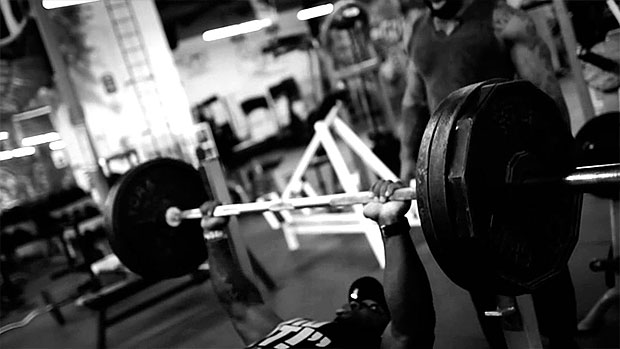This article provides a no-nonsense approach complete with a tutorial on how to warm up. See, this is a step most often skipped or neglected while it is, in fact, the moment when you can get your body primed for effort, avoid injuries, help your tender joints get more mobile, less painful, and improve your performance.
How? Let’s see all of that.
What Does Warm-Up Consist Of?
Warm-up refers to the preparation for physical exertion, or performance, by exercising or practicing gently beforehand.
This means that everything done prior to an actual workout (prior to work sets and what is defined as real/true work) is considered a warm-up.
This habit also induces the “tacit” fact that you will do it consistently since the needed physical preparation occurs beforehand.
Why Do You Need To Warm Up?
1. Increase Your Body Temperature
Warming up will (literally) increase the body temperature, which will enable a virtuous circle of great things that we want to have for a good training session and optimal PR’s. Having your body warmer will increase the blood flow, helps the organs to be better supplied in nutrients, awakened and enabled to do better.
The warmup period will also increase the synovial fluidity, get the muscles and fascia more prone to exertion, prime the nervous system and get the heart and lungs ready. To put it in more scientific terms, it increases the muscle contraction velocity, improves contractile protein binding into the muscles and thus performance.
2. Better Synovial Fluidity
Synovial fluid is present in your joints and cartilages in the form of a lubricant. Its main components are electrolytes, glucose, proteins, and hyaluronic acid, which then helps in building collagen. When you rest and are not moving much, it is solid and viscous which doesn’t make it good for lubricating the joints. When you heat up and start moving active, a higher temperature makes it become more fluid and able to absorb the nutrients, resulting in stronger joints and better oiling of the connective tissues.
Synovia fluidization is a key component of preparing the support tissues ready and avoiding overuse syndromes or tendinopathy. And if your joints are already cranky, it will alleviate the discomfort/pain and make them ready to bend those bars.
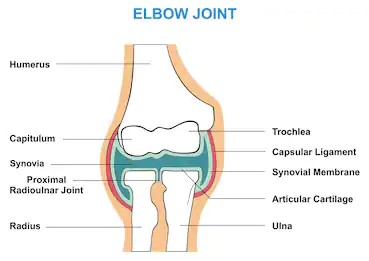
See that zone in blue? That’s where the synovia is and will get your joint capsule ready.
3. Muscles and Fascias Preparation
Muscles and fasciae (the membranes lining them) also need to get properly warmed up to prevent injuries or tears. Whilst training is supposed to break down the muscles and enable them to regrow stronger, unfortunately, there is a limit, and if you push yourself beyond that limit, you will simply slow down the recovery and inflammation management. Moderation is key.
Same for fascias, these are most often the tissue that you feel sore after a workout and that hurts a lot when you have DOMS (Delayed On set Muscle Soreness). Again, making sure they are prepared for optimal performance is key. Also, warming up will allow blood to flood through the muscle tissues, which will provide a sweet, juicy pump that everyone loves. A good warm-up produces local growth factors and boosts the blood full of glucose to be used by the muscles.
4. Nervous System Priming
Nerves transmit brain signals toward motor units, causing muscle fibers to contract. The intensity of the hertz frequency is adjusted by the brain, too. I’m sure you have experienced lifting weight once without warming up that you’re normally comfortable with, only to discover it feels very heavy and is all shaky in motion. Or you get under the bar on a Monday international chest day after a weekend of partying, drinking and clubbing only to feel as weak as a kitten, and very tired. That’s due to the fact that your nerves were “off”, and your CNS wasn’t ready yet, or hadn’t recovered. It is the same when you, for example, sprint after a bus when you are late not long after waking up; that was ultra-hard to move and you got gassed for way longer than normal, right? Again, the nerves (and the rest of the body) weren’t ready yet.
Waking them up beforehand will ensure that the motor pattern is carried out well and that everything is firing as it is supposed to be.

Someone should have used the week-end for better than Tinder.
5. Heart and Lungs Activity
Remember: your heart is a muscle too and one of the most vital ones. It pumps all the blood you got through your body via the blood vessels, veins, and capillaries throughout the organs and muscles. Having blood pumping nice and easy through your body before you start your work set is a great way to get everything switched on, with the blood bringing in the nutrients you need for peak performance; and the same goes with the lungs.
Even though I am largely addressing bodybuilding, note that in strength training, and strength sports in general, having your lungs capable of using oxygen efficiently in delivering it to your muscles is key to optimal performance, recovery between sets, and proper set duration. Indeed, you don’t want to be limited by your cardio if you decide to do higher rep sets or density work.
All of that is great, but how do we achieve it?
How to Warm Up?
1. Light Cardio
When you start your day at the gym, chances are you either got there just after awakening or very shortly after getting off work. Either way, your heart, lungs and body temperature aren’t in an optimal state for lifting. Except if you come to the gym walking for about 15-20mn minimum, I recommend a little use of the cardio section before you head for the real training. 10-15mn of fast walk on the treadmill, elliptic or stationary bike can go a long way to wake you up and help get you warmer. And also, to start helping lubricate the joints.
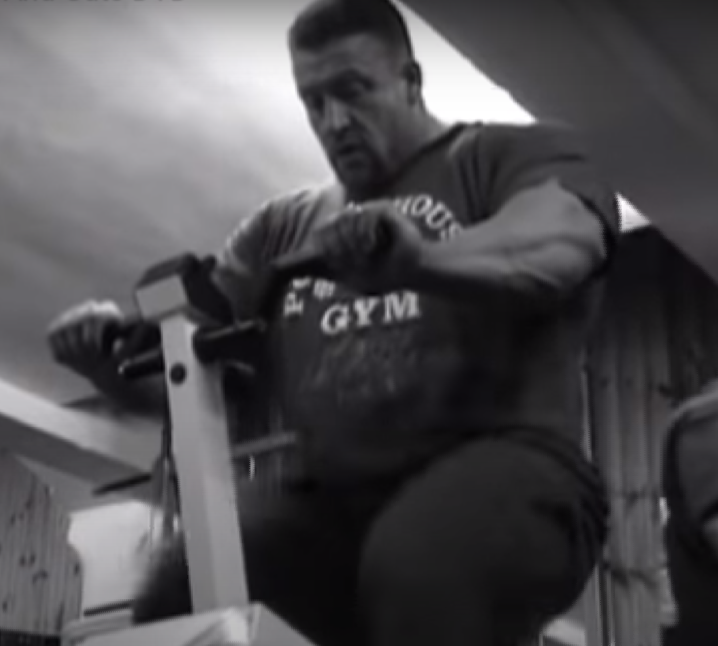
Dorian Yates, 6 times Mr. Olympia. Never skipped his treadmill or bicycle warm-up.
2. Active Stretching
Although I will talk more about stretching some other time, there are three basic elements to active stretching: it helps to make the muscles and joints ready for lifting, improves mobility and joint flexibility, makes them comfortable working at full range of motion, and also lubricates the joints better. Remember the arm movements we used to do in P.E. class back in junior high school: the wide leg swings, the inevitable hip circles, the leg lifts that would go on to dance class and the elbow rotations boxers do before going into the ring. This is active stretching, and it is meant to be a warm-up. Five minutes is all you need.
3. Ramp-Up the Weights
The good ol’ method we all do (I hope), is to start with an empty bar, or even just your body weight, and slowly climbing your way up with external load until you get to the desired weight for your working set(s). For some people, starting with an empty bar might seem silly but it can often give us immediate feedback on a little muscle knot or tender joint that could get problematic with heavy weights and on a not-so-optimal technique or a rushed lift.
If the goal is 3 plates squat (140kg/310lbs) as working set (meaning that’s a manageable weight for you, but still heavy enough to make you struggle), then the usual sequence some would do is as follows:
- 1 plate: 10 reps
- 2 plates: 10 reps
- 3 plates: YOLO
There are multiple problems with it. Firstly, as stated above, that’s not enough warm-up for your muscles and joints.
Also, your nerves aren’t primed for it, that first set is going to be shaky and that’s not supposed to be the case.
Secondly, you probably didn’t nail the technique and the internal cues. That’s too fast. That’s not enough.
The complete reverse is the guy who warmed-up so much that he no longer is at 100% to start his real work. Let’s take again the 3 plates squat for work set:
- 1 plate: 20 reps
- 1 plate 1/2: 15 reps
- 2 plates: 15 reps
- 2 1/2 plates: 12 reps
- 3 plates: “Oh shit”
Way too many reps, way too much volume = you are already trashed when it comes to 3 plates.
What a good and proper warm-up would be for this is:
- BW Squat: 20 easy reps just to let the body wake up and be sure to get used to going up and down.
- Empty Bar: 20 others easy reps, possibly paused at the bottom or with a slight “bump” to gently stretch on the ankles and the hips. Also getting the arms and shoulders prepared to be in a good, locked position to maintain the bar.
- 1 plate: 10 reps, getting the knees used to the pressure, the weight is in most cases heavy enough to get the core to brace properly and the spine neutral.
- 2 plates: 5 reps we aren’t here to exhaust ourselves, we want to wake up the CNS so we lift with more speed but still controlled. Same with the eccentric, it’s controlled, no bounce, no technique breakdown, all the internal cues and feedback are settled.
- 2 plates and a half: 2 reps, just to keep the groove and the nerves accustomed to the heavy incoming. At that point, there is no joints limitation, no weird sensation at whatever spot and you are totally focused.
- 2 plates 3/4: 1 rep, as fast as possible on the concentric to make sure we are ready (and we are). Now it’s time to rest enough to attack the set.
- 3 plates: whatever you got planned.
4. Band/Cable/Machine Work
Additionally, using some kind of tri-set or tri-set or even giant set implemented during your warm-up routine is a smart and great way to prepare your secondary and peripheral muscles for work. Let’s take the overhead press as an example. You are of course primarily going to use the deltoids and triceps to press the barbell, but the biceps and brachial also have to stabilize the shoulder and elbow joints, while the trapezius, rhomboids, lats, serratus and rotator cuffs stabilize the whole shoulder blades and collarbone region. And we can also talk about the clavicular part of the pectoral (or upper chest) is also going to assist at the bottom. Having them warmed up and ready will help support performance and also lubricate more thoroughly the joints. Here are numerous benefits:
- Less risk of injuries by lubricating more the joints.
- Warm-up faster and more muscles around the same joints.
- Don’t fatigue the muscles that are the prime movers but actually help them to recover faster since that, by bringing more blood into their surroundings, you feed them faster and better.
- Increase your strength by a little margin, and enable you to squeeze a few more reps out of the total working sets since your body detects it’s tighter and more secure.
- A better mind-muscle connection can lead long term to better muscle growth since you recruit the targeted ones better.
- Bigger pumps around the joints and help stabilize them while also reducing the shear forces and add cushion around them (for example, pumping the biceps before presses will make you more stable when your arm is flexed).
- Get into a deeply focused state since you have no time to sit around and look at your phone or chat.
No matter if you do them with light dumbells, cable or with bands, even though the last two options are better in terms of stress/effect. Here is a shortlist of these light warm-up exercises you can do before a big compounds lift:
For presses (overhead press, incline press, bench press, dips,…):
- Face pulls, Pull Apart, L Flyes and Rear Delt Flyes for upper back and rotator cuffs.
- Biceps curls and triceps extensions for elbow flexors and extensors.
- Chin-up, Pull-up and Pull Down for all the above.
- Push-Up variations for pectorals, deltoids, triceps and serratus.
For squats (back squat, front squat, split squat,…):
- Back Extension and Good Morning for erectors, glutes and hamstrings.
- Leg Extension and TKE (Terminal Knee Extension) for quadriceps.
- Leg Curl variations and GHR for hamstrings and calves.
- Ab Wheel and Hanging Leg Raise for abs and obliques.
For pulls (deadlift, rack pull, block pull, high pull,…):
- Back Extension and Good Morning for erectors, glutes and hamstrings.
- Face Pull, Row, Chin-Up, Pull-Up and Pull-Down for upper back and lats.
- Leg Curl variations and GHR for hamstrings and calves.
- Ab Wheel and Hanging Leg Raise for abs and obliques.
I know it’s very dense in information and possible choices but it’s not complicated. Let’s say you want to do a bench press variation. You are going to do your smart ramp-up (see above) and between each set, will do a very easy set of band face pull followed by 10 bodyweight chin-up. After 4-5 sets, you are ready to get into your working sets but your upper back, rotator cuffs, rear delts, biceps and forearms will all be ready to go, plus a slight pump, which will help you to be stronger, more comfortable and safer.
Or let’s imagine you want to go ham on the deadlift, but you often feel like your core isn’t as strong as it could be. A few sets of easy sets of the ab wheel and back extension between your warm-up sets can go a long way to get the muscles ready. See? Easy.
The only thing you need to make sure of is to not get overboard with those to avoid being already fatigued when it’s time to lift. So a simple rule: nothing remotely close to failure, not tiring, and you should feel like you wake up, not that it’s taking a toll on you.
5. “Activation” Drills
That’s something that gained popularity especially with all the Insta sluts walking like crabs with bands around their knees to supposedly wake-up their medius gluteus (the upper part of the glutes).
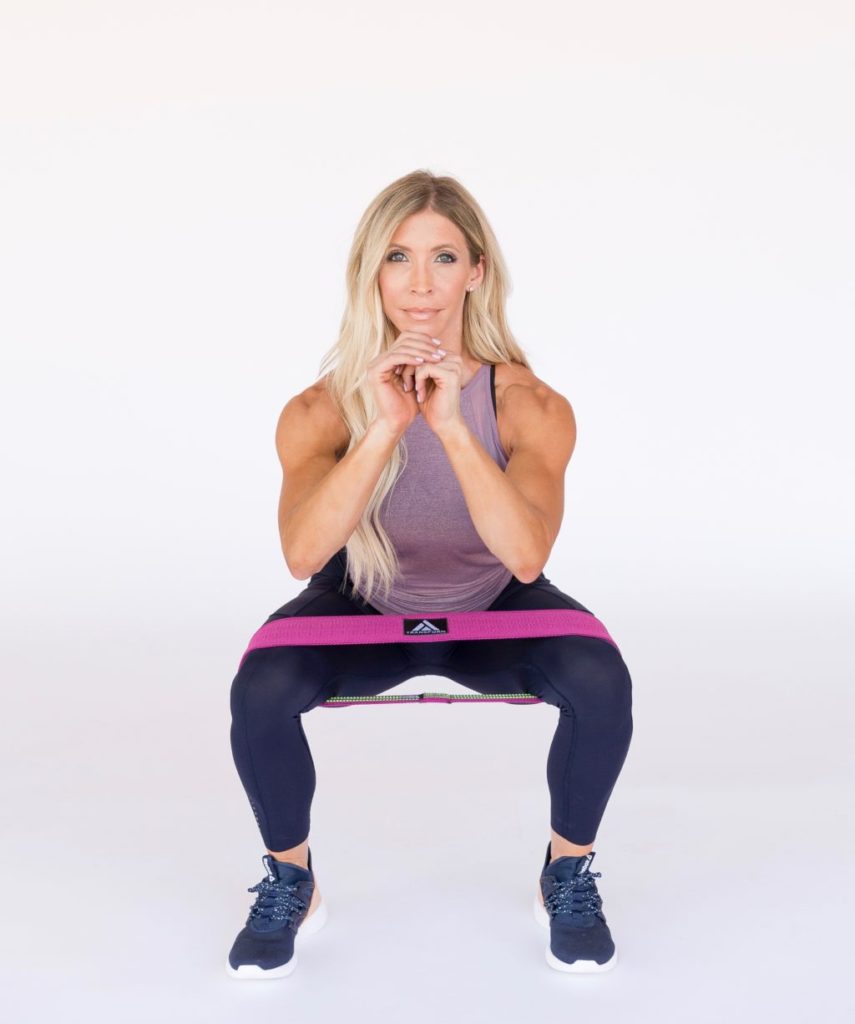
Stop this BS, it doesn’t do anything!
Thing is, it’s only useful if you are having a hard time recruiting a specific muscle that sleeps when you are doing something that should work it; a good example is all the dudes doing endless sets of bench press but not feeling their pectoral working, and not getting enough growth out of it either -except in front delts and triceps. Most of the time, their set-up is trash, their form isn’t optimal for their build and it’s all about ego lifting.
Now, let’s take a hack squat for example (the machine one). The goal is to achieve maximal tension on the quadriceps, and most people will immediately take a stance that allows them to go to parallel and even below, sometimes very deep in knee flexion. What happens? The quadriceps are forced to be recruited since they are the one and only knee extensors and guess what? Miracle: they grow! Because no assist from the back, glutes and hamstring is possible, or barely.
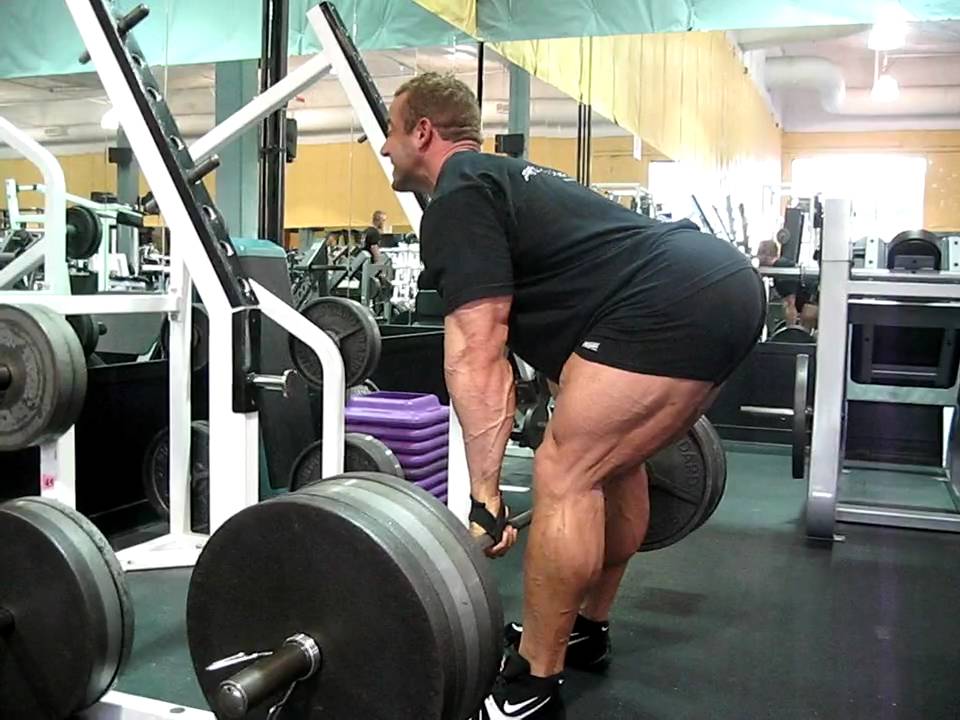
Another great exercise where you just can’t fake or “cheat” on a muscle is the Romanian Deadlift. If you are doing a good hip hinge with a proper range of motion, your hamstring can’t escape it.
In summary, what do you need to understand from all of this? If a muscle that is supposed to work isn’t, fix your form to put a better focus on it. And if it’s still impossible to recruit it, switch to cable and machine work where it’s easier to achieve it. But there’s no need for an activation drill.
However, an argument can be made for a few isolation exercises to help and wake up a muscle, pump it, warm up the joint and also kind of pre-exhaust the area. Here is a list of isolation work you can do before a big compounds lift; if you feel like it’s nearly identical to the list above, it’s because it is :
- Delts: Lateral/Rear Delt Raises, Reverse Pec Deck, Face Pull
- Pectorals: Bent Arm Flyes, Pull Over, Push-Up
- Biceps: any curl
- Triceps: any extension
- Trapezius: Face Pull, Upright Row, Shrug
- Lat: Pull Over, Pull Down
- Erectors: Hyper Extension, Reverse Hyper
- Glutes: any glute bridge
- Quadriceps: Leg Extension, TKE
- Hamstrings: Leg Curl and GHR variations
- Calves: any calf raise
Conclusion: Warm Up For Less Pain and More Gain
The warm-up is a staple and vital part of your training and should be taken seriously. It isn’t something to overlook and as you saw in this article, for multiple reasons. I hope this has been of some help. Make sure you apply these concepts for a better, more productive program with fewer risks of injuries and pains.
If you want more out of your training journey, make sure to check what I can do for you here.
Take care, warm up and get going!
Your lightkeeper,
Hersovyac.

